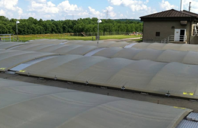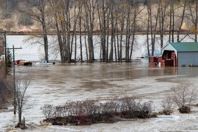WASTEWATER MANAGEMENT RESOURCES
-
For modern pipelines and pumps, noise and vibration behavior must be considered in system design. Learn how a wastewater pumping station in Greifswald, Germany reduced pump-induced pressure fluctuations by 90%, accompanied by lower vibration levels in the discharge line, with an innovative AI-enhanced damping system.
-
The South Dearborn Regional Sewer District in Lawrenceburg, Indiana, provides regional wastewater treatment services for three cities and an international distillery. The 6 mgd treatment plant is located in an area of high population growth and is surrounded by many retail operations and other commercial developments. In addition, a heavily traveled state highway runs by the treatment plant.
-
While many scientific and technical reports show that floods are becoming larger and more common, reports underestimate how their frequency is changing. Flood sizes get the spotlight, but governments and experts need to also consider their frequency to address implications overlooked by traditional management methods.
-
A water filtration treatment plant was built in 1950, pneumatic actuators were installed on all of the filter control valves. The pneumatic actuators were not always reliable. Air compressor problems limited the availability of the pneumatics to control the filter valves.
-
Discover how installing Beck electric actuators on the aeration blower control valves has improved process stability and plant operations for a South Florida treatment plant.
-
A water treatment plant was using conventional electric actuators on valves across the facility, including the modulating Filter Effluent applications. A history of actuator problems prompted plant personnel to consider replacements.
-
Read about one of the largest wastewater treatment plants in the world that recently finished a project for upgrading its sludge valve actuators.
-
Utilities need greater efficiency, lower costs, and more visibility. So, one would think the uptake for digital solutions would be smoother and faster. But it’s not. Why?
-
In areas with storm drains, the water can quickly overwhelm the drains, causing flooding hazards. For this reason, many towns have ordinances dictating how much ground can be covered with impermeable substrates.
-
Ferrán Bosch, Senior Business Development Manager Xylem Vue at Xylem, speaks with Koldo Urkullu, Director of Operations and Asset Management at CABB, about how a utility is innovating to meet volatile weather patterns head-on.











